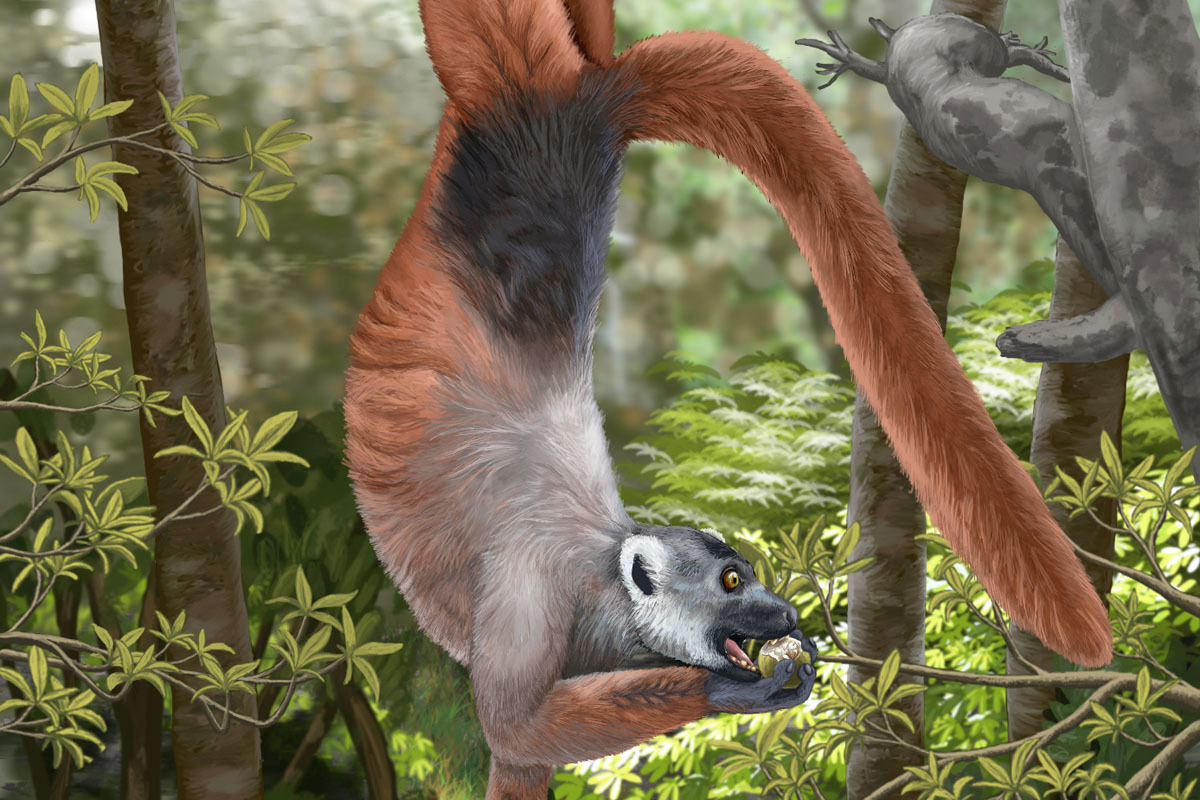Madagascar, an island known for its unique biodiversity, once harbored some of the most extraordinary creatures ever. Among them were the giant lemurs, primates that rivaled modern-day gorillas in size. However, these magnificent creatures vanished, leaving behind only skeletal remains. Recent discoveries of mass burial sites, or “graveyards” for giant lemurs, have provided invaluable insights into their extinction, ecology, and interactions with early human settlers.
Discovery of Giant Lemur Graveyards
Archaeologists and paleontologists have uncovered several sites across Madagascar where the bones of giant lemurs are clustered together. These sites, sometimes found within caves or ancient lakebeds, suggest that natural or human-influenced events led to their accumulation.
Ankarana Cave System – Home to one of the richest deposits of giant lemur fossils, showing evidence of mass mortality events.
Tsirave Fossil Beds – Large numbers of lemur bones mixed with other extinct megafauna, suggesting environmental shifts played a role.
Subfossil Deposits in Lake Beds – Preserved in sediment layers, these remains tell stories of past climates and ecosystems.
Andrahomana Cave – A central site where evidence of human interaction with giant lemurs has been found, including butchered remains and tool marks on bones.
The Giants of Madagascar: Species Overview
Before their extinction, Madagascar was home to at least 17 species of giant lemurs, some larger than modern baboons. Key species include:
Also known as the koala lemur, this species has a sloth-like appearance, weighing up to 75 kg (165 lbs).
Adapted to a tree-dwelling lifestyle but slower-moving than today’s lemurs.
The skull structure suggests it had a strong bite, likely feeding on tough leaves.
Large hands and feet allowed it to cling to tree trunks for extended periods.
Known as the sloth lemur, this species was heavily built, weighing over 50 kg (110 lbs).
Hung from branches like modern-day sloths, but was much more extensive.
Likely fed on leaves, fruits, and possibly small invertebrates.
Analysis of its limb structure suggests slow, deliberate movements through trees.
The largest known lemur, comparable in size to a male gorilla, weighs over 200 kg (440 lbs).
Ground-dwelling, with strong limbs suited for walking rather than climbing.
Its extinction marked the loss of the biggest primate Madagascar ever saw.
Likely had a low reproductive rate, making them highly vulnerable to environmental changes and human hunting.
Causes of Giant Lemur Extinction
Scientists have long debated what led to the disappearance of these creatures. The primary theories include:
Humans arrived in Madagascar around 2,500 years ago.
Early settlers likely hunted giant lemurs for food, as evidenced by cut marks on bones found in fossil graveyards.
A rapid population decline coincided with the rise of human settlements.
Evidence of early traps and butchery suggests systematic hunting practices.
Deforestation through slash-and-burn agriculture reduced the forests that giant lemurs depended on.
Fragmentation of their habitats made it harder for populations to recover.
Some species, like Archaeoindris, were likely restricted to small regions, making them more vulnerable to habitat loss.
Charcoal remains in fossil layers, which indicates widespread forest burning during the time of early human settlements.
Shifts in temperature and rainfall patterns may have contributed to the decline of food sources.
Drying Madagascar’s interior over the past few thousand years reduced viable habitats.
Evidence from lake sediments shows a shift toward drier conditions, which may have affected fruit availability for lemurs.
This climate shift coincided with increased aridity, which could have led to reduced water sources.
Evidence from the Fossil Record
Examinations of giant lemur fossils found in graveyards have provided key evidence:
Cut Marks on Bones – Indicating butchering by early humans.
Burned Bone Fragments suggest they were cooked as food.
Pollen and Sediment Analysis – Showing drastic environmental changes that affected their survival.
Carbon Dating – Placing their extinction within the last 1,000 years, long after human arrival.
DNA Extraction Attempts – Some genetic material has been retrieved from subfossil remains, allowing comparisons with modern lemurs.
The Mystery of Mass Burial Sites
Why are so many giant lemur remains found in clustered locations? Theories include:
Natural Death Traps – Caves or bogs where animals became trapped and died over time.
Human Hunting Sites – Early Malagasy people may have gathered and butchered lemurs at specific locations.
Drought-Induced Die-Offs – Climate shifts could have concentrated animal remains in dried-up lake beds.
Seasonal Migration Paths – Some researchers suggest giant lemurs may have traveled seasonally, leading to high mortality in specific areas.
Implications for Conservation
The extinction of giant lemurs serves as a warning for Madagascar’s modern wildlife. Today, over 90% of lemur species are threatened due to habitat loss and hunting. By studying the past, conservationists hope to prevent history from repeating itself.
Reforestation Projects – Efforts are underway to restore Madagascar’s forests and provide habitat for surviving lemur species.
Anti-Poaching Measures – Strengthened laws and enforcement aim to protect modern lemurs from illegal hunting.
Ecotourism Development – Sustainable tourism can incentivize locals to conserve lemurs rather than exploit them.
Future Research Directions
The study of giant lemur graveyards is still in its early stages, and many unanswered questions remain:
Could undiscovered species still be found? Ongoing excavations may reveal previously unknown giant lemurs.
What were their exact dietary habits? Further isotope analysis could clarify what foods they relied on.
Did humans attempt to domesticate lemurs? Some evidence suggests that early Malagasy people may have kept lemurs in captivity.
How fast did extinction occur? More precise dating methods could determine whether their decline was gradual or abrupt.
Could DNA analysis reconstruct their genome? Advanced techniques may one day allow scientists to learn more about their genetics.
Conclusion
The graveyards of giant lemurs offer a rare glimpse into Madagascar’s ancient past, revealing a lost world of megafauna that once thrived on the island. While their extinction was likely caused by human activity and environmental change, their legacy remains in the bones they left behind. As discoveries continue to emerge, scientists strive to piece together the final chapters of these remarkable creatures, ensuring that modern conservation efforts protect the unique biodiversity that remains.




